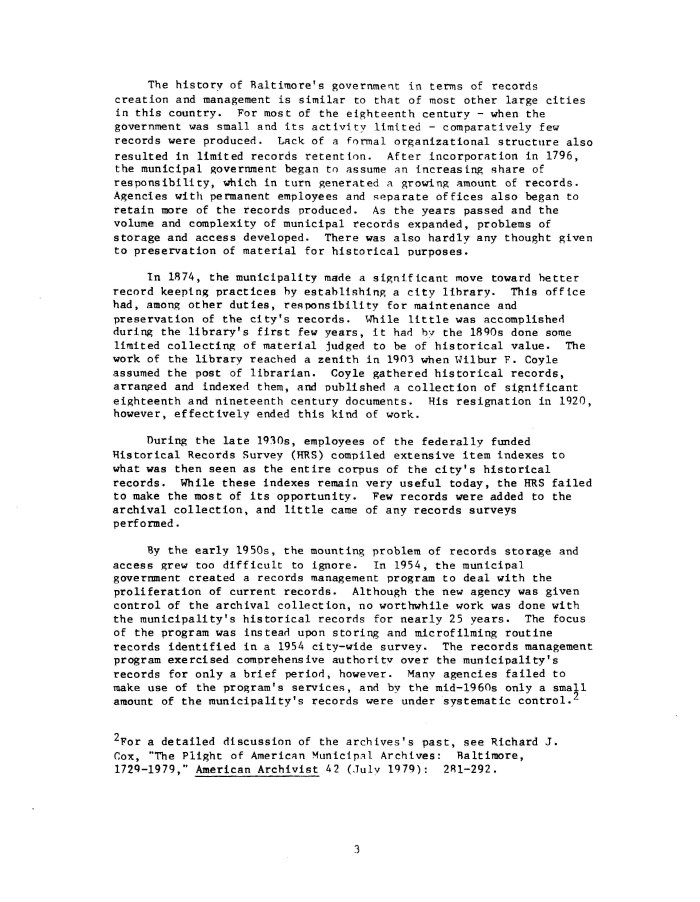|
The history of Baltimore's government in terms of records
creation and management is similar to that of most other large cities
in this country. For most of the eighteenth century - when the
government was small and its activity limited - comparatively few
records were produced. Lack of a formal organizational structure also
resulted in limited records retention. After incorporation in 1796,
the municipal government began to assume an increasing share of
responsibility, which in turn generated a growing amount of records.
Agencies with permanent employees and separate offices also began to
retain more of the records produced. As the years passed and the
volume and complexity of municipal records expanded, problems of
storage and access developed. There was also hardly any thought given
to preservation of material for historical purposes.
In 1874, the municipality made a significant move toward better
record keeping practices by establishing a city library. This office
had, among other duties, responsibility for maintenance and
preservation of the city's records. While little was accomplished
during the library's first few years, it had by the 1890s done some
limited collecting of material judged to be of historical value. The
work of the library reached a zenith in 1903 when Wilbur F. Coyle
assumed the post of librarian. Coyle gathered historical records,
arranged and indexed them, and published a collection of significant
eighteenth and nineteenth century documents. His resignation in 1920,
however, effectively ended this kind of work.
During the late 1930s, employees of the federally funded
Historical Records Survey (HRS) compiled extensive item indexes to
what was then seen as the entire corpus of the city's historical
records. While these indexes remain very useful today, the HRS failed
to make the most of its opportunity. Few records were added to the
archival collection, and little came of any records surveys
performed.
By the early 1950s, the mounting problem of records storage and
access grew too difficult to ignore. In 1954, the municipal
government created a records management program to deal with the
proliferation of current records. Although the new agency was given
control of the archival collection, no worthwhile work was done with
the municipality's historical records for nearly 25 years. The focus
of the program was instead upon storing and microfilming routine
records identified in a 1954 city-wide survey. The records management
program exercised comprehensive authoritv over the municipality's
records for only a brief period, however. Many agencies failed to
make use of the program's services, and by the mid-1960s only a small
amount of the municipality's records were under systematic control.
a detailed discussion of the archives 's past, see Richard J.
Cox, "The Plight of American Municipal Archives: Baltimore,
1729-1979," American Archivist 42 (July 1979): 281-292.
|

